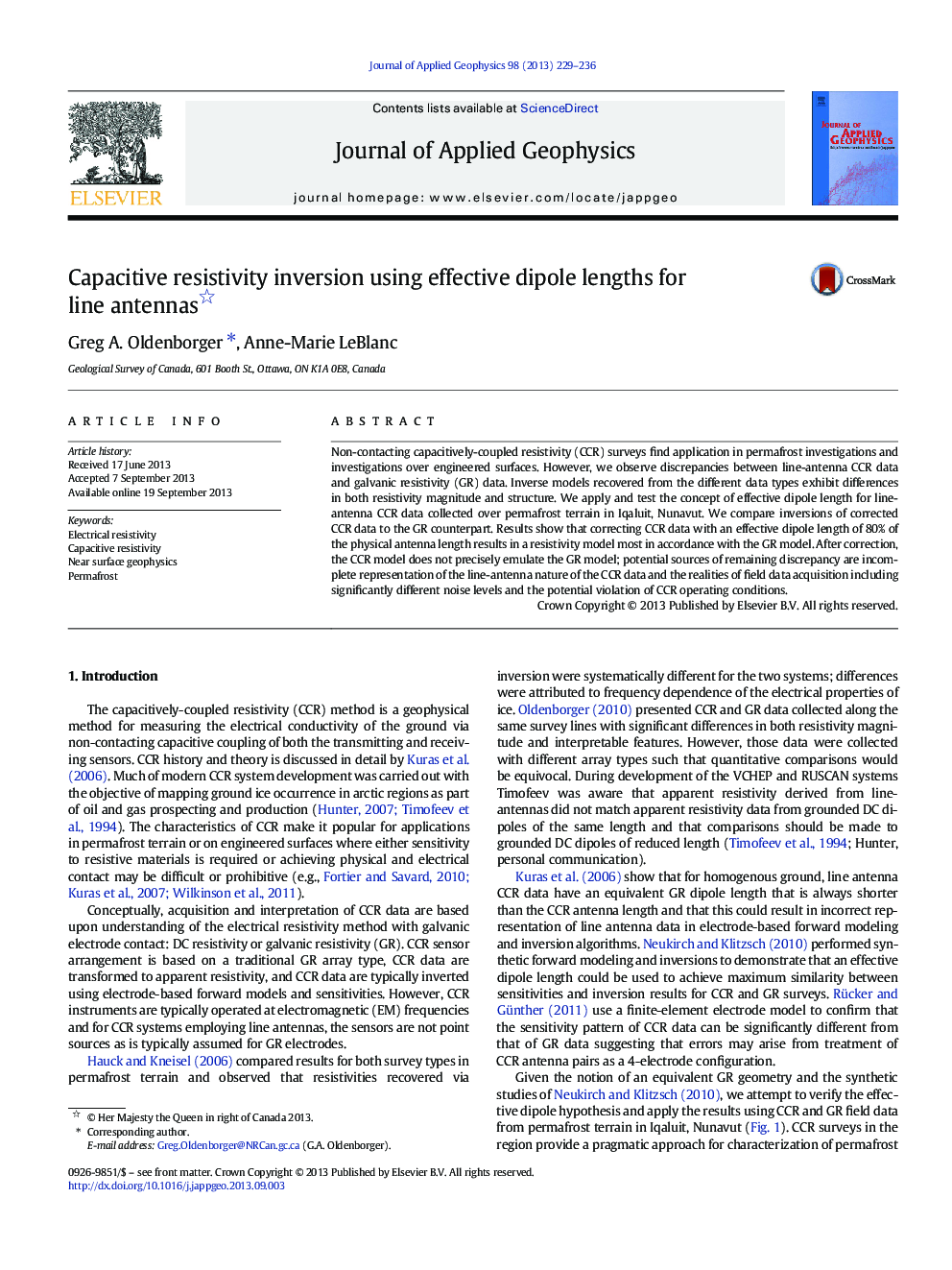| Article ID | Journal | Published Year | Pages | File Type |
|---|---|---|---|---|
| 4740279 | Journal of Applied Geophysics | 2013 | 8 Pages |
•We compare line-antenna capacitive resistivity data with galvanic resistivity data.•We observe discrepancies in capacitive and galvanic resistivity data and inversions.•Effective dipole length corrections result in more consistent data and inversions.•Line-antenna capacitive resistivity inversions should use effective dipole length.
Non-contacting capacitively-coupled resistivity (CCR) surveys find application in permafrost investigations and investigations over engineered surfaces. However, we observe discrepancies between line-antenna CCR data and galvanic resistivity (GR) data. Inverse models recovered from the different data types exhibit differences in both resistivity magnitude and structure. We apply and test the concept of effective dipole length for line-antenna CCR data collected over permafrost terrain in Iqaluit, Nunavut. We compare inversions of corrected CCR data to the GR counterpart. Results show that correcting CCR data with an effective dipole length of 80% of the physical antenna length results in a resistivity model most in accordance with the GR model. After correction, the CCR model does not precisely emulate the GR model; potential sources of remaining discrepancy are incomplete representation of the line-antenna nature of the CCR data and the realities of field data acquisition including significantly different noise levels and the potential violation of CCR operating conditions.
